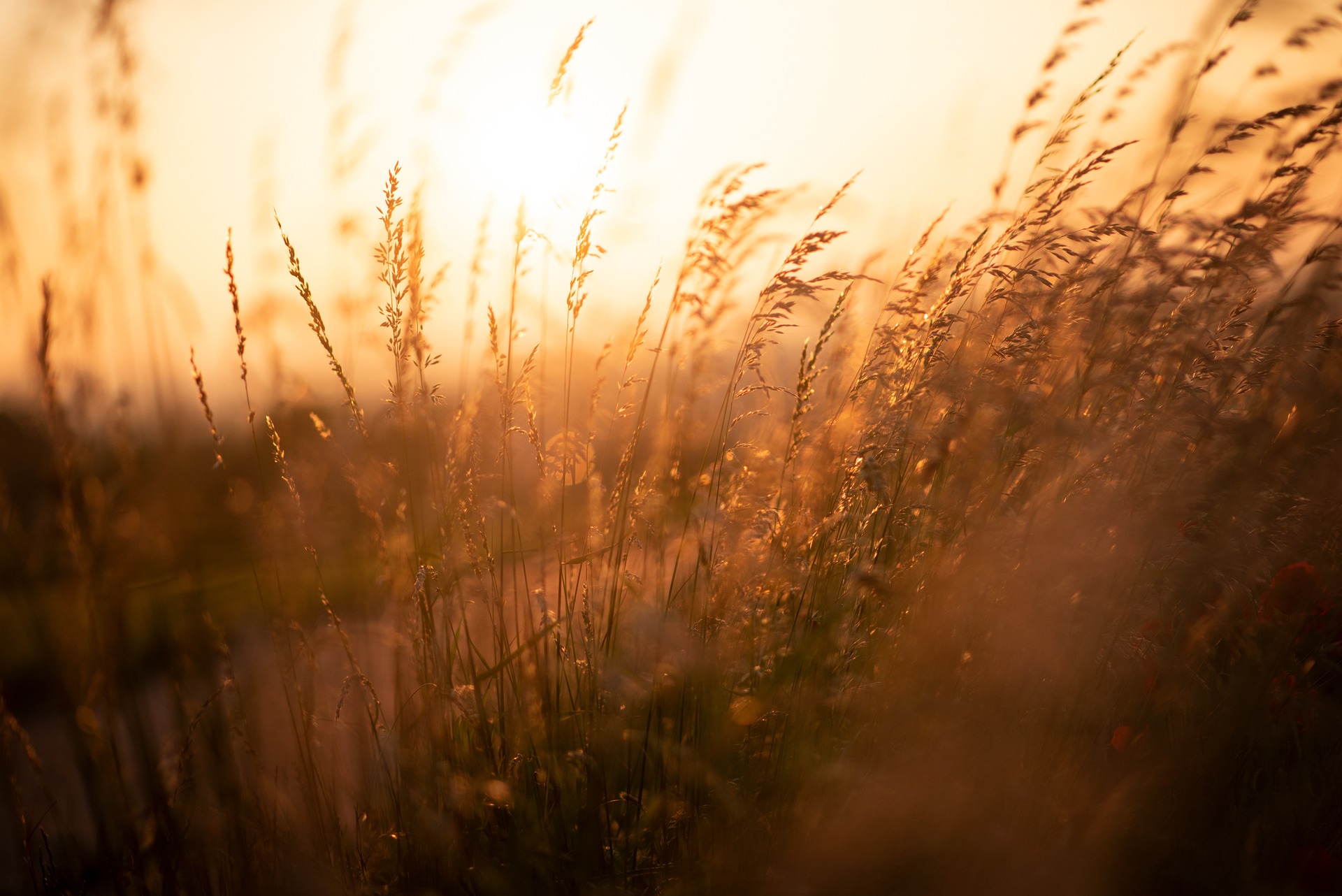Passion of the People – 1.1.4
Solstices and Equinoxes
When clocks and electronic objects did not exist, the movement of the Sun was used by ancient people to mark time and the succession of seasons. Capable of geometrically calculating the position of the sun, these populations noticed that the point where it rose and set changed from day to day, even slightly, throughout the year. Today we know that this occurs because the Earth is tilted on its axis, so that the sun appears in different positions of the sky as the planet rotates.
Twice a year, the sun reaches its lowest or highest possible position and then changes direction; this occurs at the winter and summer solstice. Ancient astronomers noticed that the sun stopped moving northwards as summer approached; indeed, the term “solstice” stems from the Latin words “sol” and “stitium”, meaning “sun” and “still”. Also called “midsummer”, the summer solstice occurs when the sun reaches its northernmost point; it is the longest day of the year for the northern hemisphere and takes place between 20 and 22 June. With the summer solstice, the North Pole reaches its maximum inclination towards the sun. For this reason, the northernmost hemisphere enters the phase of the year with the longest period of sunlight.
In the Neolithic era, the summer solstice became a reference to predict the when to plant and harvest crops. For example, in ancient Egypt it corresponded to the rising of the Nile and served as a tool to understand when the annual floods would occur. In ancient Greece, meanwhile, the summer solstice was accompanied by festivals, such as Kronia – celebrating the god of agriculture Chronos; it was also a significant event because it initiated the countdown to the opening of the Olympic games. The goddess Vesta (goddess of the hearth) was the star of the so-called Vestalia festival, held in ancient Rome as the solstice approached. In ancient China earth, femininity and the force called “yin” were celebrated during the summer solstice – in a complementary way, winter solstice was dedicated to the heavens, masculinity and “yang”. Midsummer rituals were also practised by Native American tribes, such as the Sioux, which performed Sun Dances around a tree and wore symbolic colours during the celebrations; some of these rituals still survive today.
During the winter solstice, the Sun reaches its southernmost point – marking the shortest day in the northern hemisphere and the maximum distance of the North Pole from our sun; it usually occurs on 21 or 22 December. After the winter solstice, the days slowly but steadily become longer, until the summer solstice.
Parallel to the Vestalia festival, the winter solstice was celebrated by ancient Romans with the “Saturnalia festival”. Held in mid-December, it honored the god of agriculture Saturn and became increasingly important, lasting up to a week. Many traditions and elements characterising Christmas today derive from this festival – i. e. candles, wreaths, gift-giving and feasting. Indeed, people decorated their homes with wreaths or similar ornaments, work stopped and the Romans celebrated by singing, playing music, exchanging gifts and feasting. On the occasion of the winter solstice, Pagan Scandinavian and Germanic populations celebrated the Yule holiday, which lasted 12 days. Besides Saturnalia, many Christmas traditions derive from Yule – for example, decorating the Christmas tree. For the Incas, the winter solstice occurred in June and was accompanied by the Inti Raymi festival, dedicated to the sun god (Inti Raymi means “festival of the sun” in the Quechua language; it was honoured with banquets and animal sacrifices. The festival was banned after the Spanish conquest and only resumed in the 20th century – with mock sacrifices taking place instead of real ones.
When an equinox occurs, day and night have a duration that is almost similar all over the planet: the word comes indeed from the Latin “aequi” (“equal”) and “nox” (“night”). This is the only time when both hemispheres have almost equal hours of light and darkness. The equinoxes are the autumnal equinox (around 22 September) and the spring equinox, or vernal equinox (around 21 March); dates that may vary depending on the hemisphere. During the equinoxes, the Sun is exactly above the Equator, which is why day and night are the same length. Furthermore, the sun rises exactly in the east and sets exactly in the west.
Similarly to solstices, equinoxes were accompanied by different kinds of celebrations in ancient times. For the Greeks, the autumnal equinox occurred when the goddess Persephone returned to the underworld to be reunited with her husband Hades. The full moon closest to the September equinox was referred to as “Harvest Moon” by the ancient Chinese and celebrated with offerings to the moon; the autumnal solstice was accompanied with harvest celebrations also by Pagans. A great significance was also given to the vernal equinox. For instance, the Egyptian sphinx was built so as to point towards the place where the sun rises during the spring equinox; this equinox is also important for the Christian religion since Easter falls on the Sunday following the first full moon after the vernal equinox.
According to archaeologists, ancient people used several prehistoric sites to determine the position of the Sun and thus predict when there would be a solstice or equinox. For example, the ruins of Maya and Aztec civilisations – such as temples or public buildings – are aligned with shadows indicative of important astrological phenomena, such as solstices. An example is provided by the huge pyramid built by Mayans in Chichen Itza – where specific sunlight plays signal the beginning of the seasons. Stonehenge, in England, and Newgrange, in Ireland, were ancient sites with axes aligned to the winter solstice. These locations are very crowded nowadays during the solstices and equinoxes, signalling an interest in these astronomical events that was passed down to modern society by people of the past.


Further Resources
Links below will redirect you to external websites. In accordance with the European data protection declarations, we would like to point out that by clicking on these links you may send data to external providers. We cannot prevent that.
Images
![]() Summer Solstice in the Northern Hemisphere (NASA)
Summer Solstice in the Northern Hemisphere (NASA)
![]() The Sun at Solstice (NASA)
The Sun at Solstice (NASA)
![]() Sunrise Solstice at Stonehenge (NASA)
Sunrise Solstice at Stonehenge (NASA)
![]() Solstice at Newgrange (NASA)
Solstice at Newgrange (NASA)
![]() Equinox Sunset (NASA)
Equinox Sunset (NASA)
![]() Equinox: The Sun from Solstice to Solstice (NASA)
Equinox: The Sun from Solstice to Solstice (NASA)
![]() The four seasons (ESO)
The four seasons (ESO)
 Luna Del Raccolto Foto e Immagini – 123RF
Luna Del Raccolto Foto e Immagini – 123RF
Videos
![]() What is a Solstice? | National Geographic
What is a Solstice? | National Geographic
![]() What is an Equinox? | National Geographic
What is an Equinox? | National Geographic
![]() Why Do We Have Different Seasons? | California Academy of Sciences
Why Do We Have Different Seasons? | California Academy of Sciences
![]() What’s the Difference Between a Solstice and an Equinox? | Cosmo Verse
What’s the Difference Between a Solstice and an Equinox? | Cosmo Verse
 Stagioni astronomiche: equinozi e solstizi. Video con simulazioni animate. – Enrico Vitali – Scienze e Natura
Stagioni astronomiche: equinozi e solstizi. Video con simulazioni animate. – Enrico Vitali – Scienze e Natura
 Stonehenge: Il Misterioso Monumento della Inghilterra – Oltre le 7 Meraviglie del Mondo – Storia e Mitologia Illustrate
Stonehenge: Il Misterioso Monumento della Inghilterra – Oltre le 7 Meraviglie del Mondo – Storia e Mitologia Illustrate
 Chichén Itzá: La Grande Città della Civiltà Maya – Le Sette Meraviglie del Mondo Moderno – Storia e Mitologia Illustrate
Chichén Itzá: La Grande Città della Civiltà Maya – Le Sette Meraviglie del Mondo Moderno – Storia e Mitologia Illustrate
 I Saturnali, il “Natale” dell’Antica Roma – Scripta Manent – Roberto Trizio
I Saturnali, il “Natale” dell’Antica Roma – Scripta Manent – Roberto Trizio
 Le festività nell’antica Roma: i SATURNALIA – Prof. Daniele Coluzzi
Le festività nell’antica Roma: i SATURNALIA – Prof. Daniele Coluzzi
 In Perù torna il festival Inti Raymi, per il dio-Sole degli Inca – Il Sole 24 Ore Video
In Perù torna il festival Inti Raymi, per il dio-Sole degli Inca – Il Sole 24 Ore Video
 La magia del solstizio d’inverno a Newgrange che da 5.000 anni cattura i raggi del Sole – RaiNews
La magia del solstizio d’inverno a Newgrange che da 5.000 anni cattura i raggi del Sole – RaiNews
 Irlanda: la tomba di Newgrange – Mediaset Infinity
Irlanda: la tomba di Newgrange – Mediaset Infinity
Online Resources
 Che cos’è il solstizio d’estate? – National Geographic Italia
Che cos’è il solstizio d’estate? – National Geographic Italia
 Che cos’è il solstizio – EDUInaf
Che cos’è il solstizio – EDUInaf
 Il Solstizio d’Estate, la stella Sirio e l’inondazione del Nilo: la celebrazione del Nuovo Anno nell’Antico Egitto – MeteoWeb
Il Solstizio d’Estate, la stella Sirio e l’inondazione del Nilo: la celebrazione del Nuovo Anno nell’Antico Egitto – MeteoWeb
 Solstizio d’estate: scienza, riti e tradizioni – Chiara Pizzimenti, Vanity Fair
Solstizio d’estate: scienza, riti e tradizioni – Chiara Pizzimenti, Vanity Fair
 Ha ancora senso oggi festeggiare il solstizio d’estate? – Esquire
Ha ancora senso oggi festeggiare il solstizio d’estate? – Esquire
 I Vestalia, festeggiamenti romani che avvenivano in questi giorni – Simona Aiuti
I Vestalia, festeggiamenti romani che avvenivano in questi giorni – Simona Aiuti
 La leggenda dell’albero verde – RSI
La leggenda dell’albero verde – RSI
 Saturnali – TRECCANI
Saturnali – TRECCANI
 Da dove ha origine la festa del Natale? – STORICA National Geographic
Da dove ha origine la festa del Natale? – STORICA National Geographic
 Yule. Le antiche origini del Natale. – Valentina Isernia
Yule. Le antiche origini del Natale. – Valentina Isernia
 Inti Raymi: la festa più importante dell’impero incaico – Perù Travel
Inti Raymi: la festa più importante dell’impero incaico – Perù Travel
 Cos’è la Luna del raccolto e quando potremo vederla – Chiara Zennaro, WIRED
Cos’è la Luna del raccolto e quando potremo vederla – Chiara Zennaro, WIRED
 Antico Egitto: l’ultimo segreto della Sfinge – Focus
Antico Egitto: l’ultimo segreto della Sfinge – Focus
 Come si calcola la data di Pasqua – Luca Nardi, WIRED
Come si calcola la data di Pasqua – Luca Nardi, WIRED
 Pasqua: perché la data cambia sempre e non è fissa come il Natale? – Focus
Pasqua: perché la data cambia sempre e non è fissa come il Natale? – Focus
 Newgrange, la porta sul neolitico che DEVI vedere almeno una volta – Esquire
Newgrange, la porta sul neolitico che DEVI vedere almeno una volta – Esquire
Further Readings
Teaching Material
For Kids
![]() What Is An Equinox? | Peekaboo Kidz
What Is An Equinox? | Peekaboo Kidz
![]() The Longest Day of the Year: The Solstice! (SciShow Kids)
The Longest Day of the Year: The Solstice! (SciShow Kids)
![]() Happy Equinox! Science for Kids (SciShow Kids)
Happy Equinox! Science for Kids (SciShow Kids)
 Equinozi e solstizi – Veronica Perotto, Scuolamania
Equinozi e solstizi – Veronica Perotto, Scuolamania
 L’Alternanza delle Stagioni – Giochiamo con la Scienza
L’Alternanza delle Stagioni – Giochiamo con la Scienza
 I movimenti della Terra: videolezione bambini scuola primaria – Facciamo Scienze
I movimenti della Terra: videolezione bambini scuola primaria – Facciamo Scienze
 Paxi – Il giorno, la notte e le stagioni – European Space Agency, ESA
Paxi – Il giorno, la notte e le stagioni – European Space Agency, ESA
 I Movimenti della Terra – Cristiana Borzoni
I Movimenti della Terra – Cristiana Borzoni
 Big Bang! Un Viaggio nei Misteri – Stonehenge con Massimo Polidoro – Big Bang!
Big Bang! Un Viaggio nei Misteri – Stonehenge con Massimo Polidoro – Big Bang!


